Original author: Poopman, DeFi researcher
Compiled by | Odaily Planet Daily (@OdailyChina)
Translator | CryptoLeo (@LeoAndCrypto)
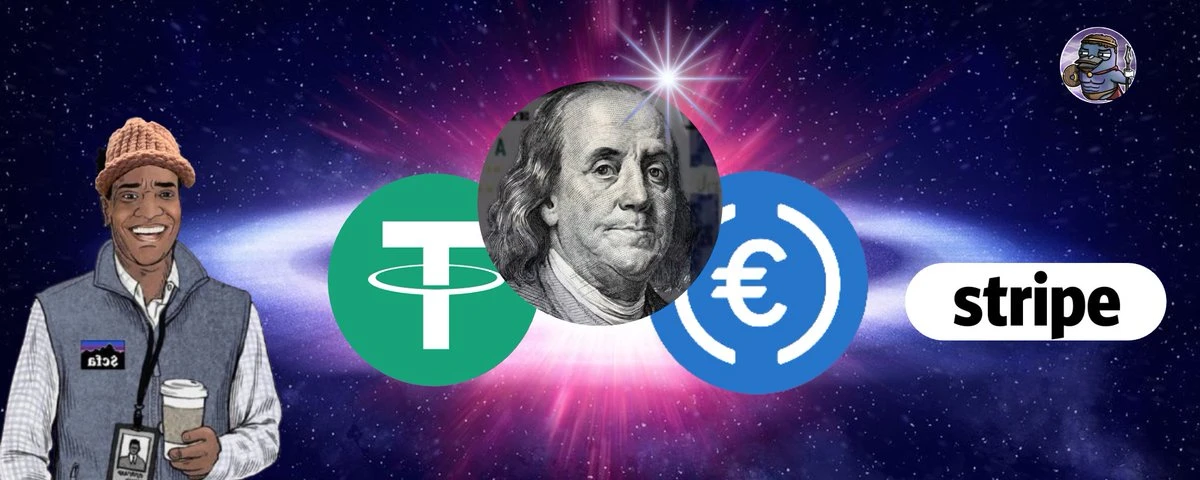
Recently, DeFi researcher Poopman published an article on the current status and vision of stablecoins, which Odaily Planet Daily has compiled as follows:
Stablecoins are entering a breakthrough moment, with headlines emerging one after another:
The "Genius Act" has been passed;
Stripe acquires crypto wallet provider Privy and stablecoin infrastructure company Bridge;
Circle (CRCL) has increased sevenfold after its IP0;
Plasma deposit cap reaches $1 billion;
Tether is now the 19th largest entity in Treasury bond investments;
Mastercard partners with Chainlink to allow users to purchase stablecoins on DEX;
Banks, large tech companies, and regions in Asia are racing to launch their own stablecoins.
Regulation was once seen as an obstacle to the development of stablecoins. Due to a lack of understanding, consensus, and appropriate compliance tools, traditional financial institutions were hesitant to enter the field. However, with a deeper understanding of stablecoin regulation, this factor, once viewed as a barrier, has become a catalyst.
Fireblock states that the regulatory framework has increased corporate confidence in stablecoins by 80%. Meanwhile, 86% of companies have established stablecoin infrastructure, indicating that banks and institutions have been preparing for this shift.
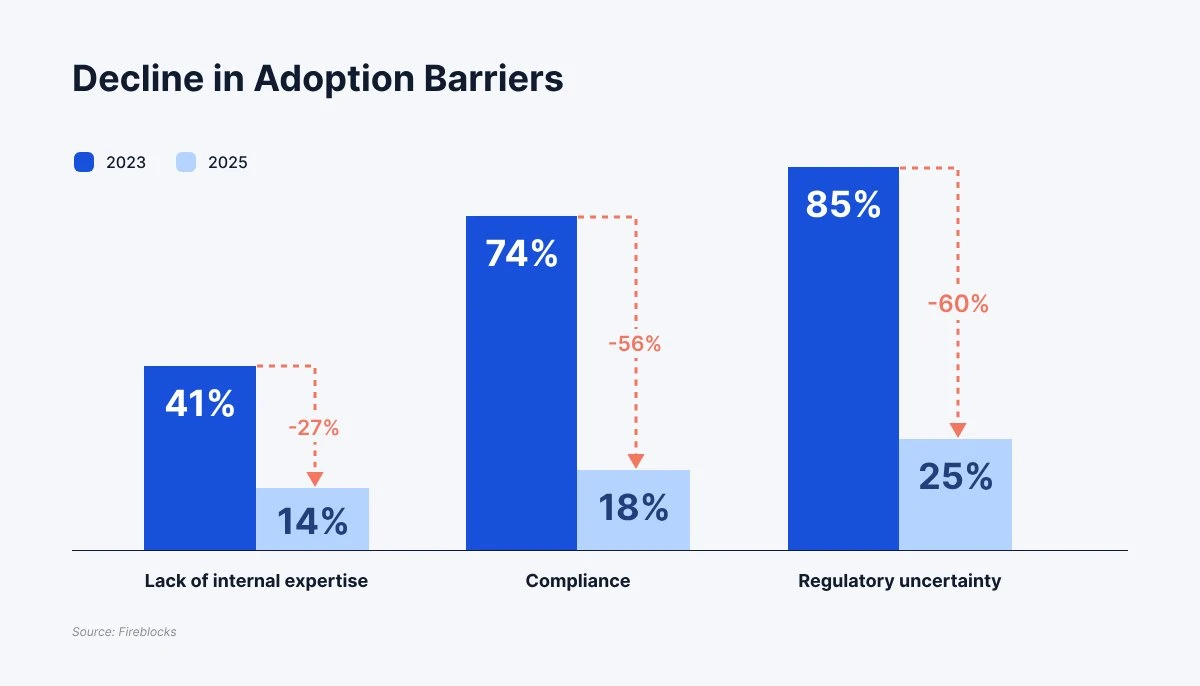
So, why have stablecoins suddenly become the focus of attention?
Because they can solve real problems. Some notable advantages of stablecoins include:
1. Instant and lower-cost cross-border transactions, enabling emerging markets to access dollars without permission, potentially achieving more efficient on-chain foreign exchange market transactions;
2. Stablecoins can create more demand for U.S. Treasury bonds, which the U.S. is very willing to leverage to sell its debt.
Thanks to the public attention attracted by the Genius Act, I believe we are entering a new era where the next wave of adoption centered around stablecoins will be driven by non-crypto-native communities, known as "mass adoption."
What’s next?
In my view, the anticipated growth of stablecoins, particularly in payments, cross-border transactions, and personal banking, will create numerous opportunities for businesses related to stablecoins. Let’s explore four potential paths for the future of stablecoins:
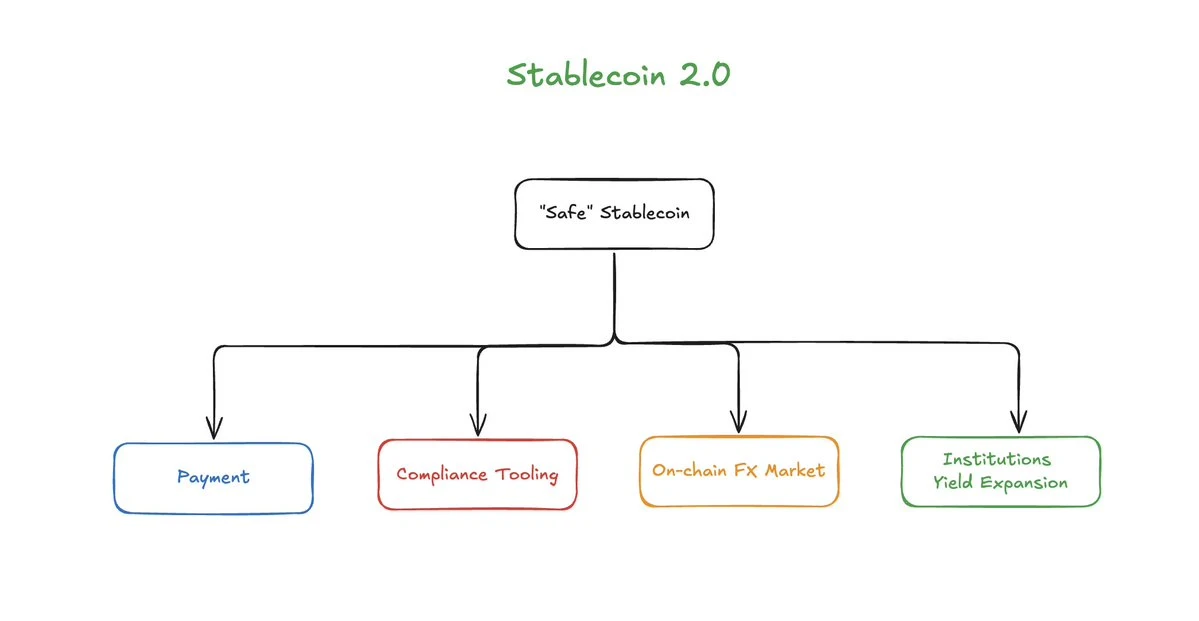
Beyond Transactions: Stablecoins are moving into the mainstream. From this moment on, stablecoins will no longer just serve trading pairs but will also cater to payments, savings, and even new businesses previously limited by T+1 settlement delays.
Compliance Tools: Issuers need more mature, regulation-friendly solutions (such as tax/fraud reporting, etc.) to comply with anti-money laundering laws and policies.
24/7 On-chain Foreign Exchange Market: A more efficient, round-the-clock foreign exchange market supporting instant settlement.
Increased Demand for Yields: As the market landscape becomes increasingly fragmented, there is a need for more RWA strategies, fixed-rate yield products, and aggregation products (e.g., indices).
Beyond Transactions
The original intention of stablecoins is simple: to provide cryptocurrency traders with volatility hedging and to serve as a safe haven for crypto assets. USDT, a stablecoin fully backed by assets, became the dominant trading pair on major exchanges due to its first-mover advantage. Following that, USDC emerged as the second most popular stablecoin. Fundamentally, the birth of stablecoins was to meet the trading and hedging needs of the early stages of cryptocurrency.
New Trends:
Beyond trading, payments have become another core function of stablecoins, a trend that has become increasingly evident over the past year. The 2025 Cryptocurrency Adoption Index report shows that 8 out of the 10 countries with the fastest-growing cryptocurrency adoption rates are actually driven by P2P and remittance demand.
The growth is primarily concentrated in emerging markets, where the purpose of stablecoins is to provide a way to access dollars without permission, which is not easily achievable in low-income countries. For business activities in these regions, dollar-backed stablecoins offer protection against local currency volatility risks. With increasing confidence, I expect the regions adopting stablecoins to further expand.
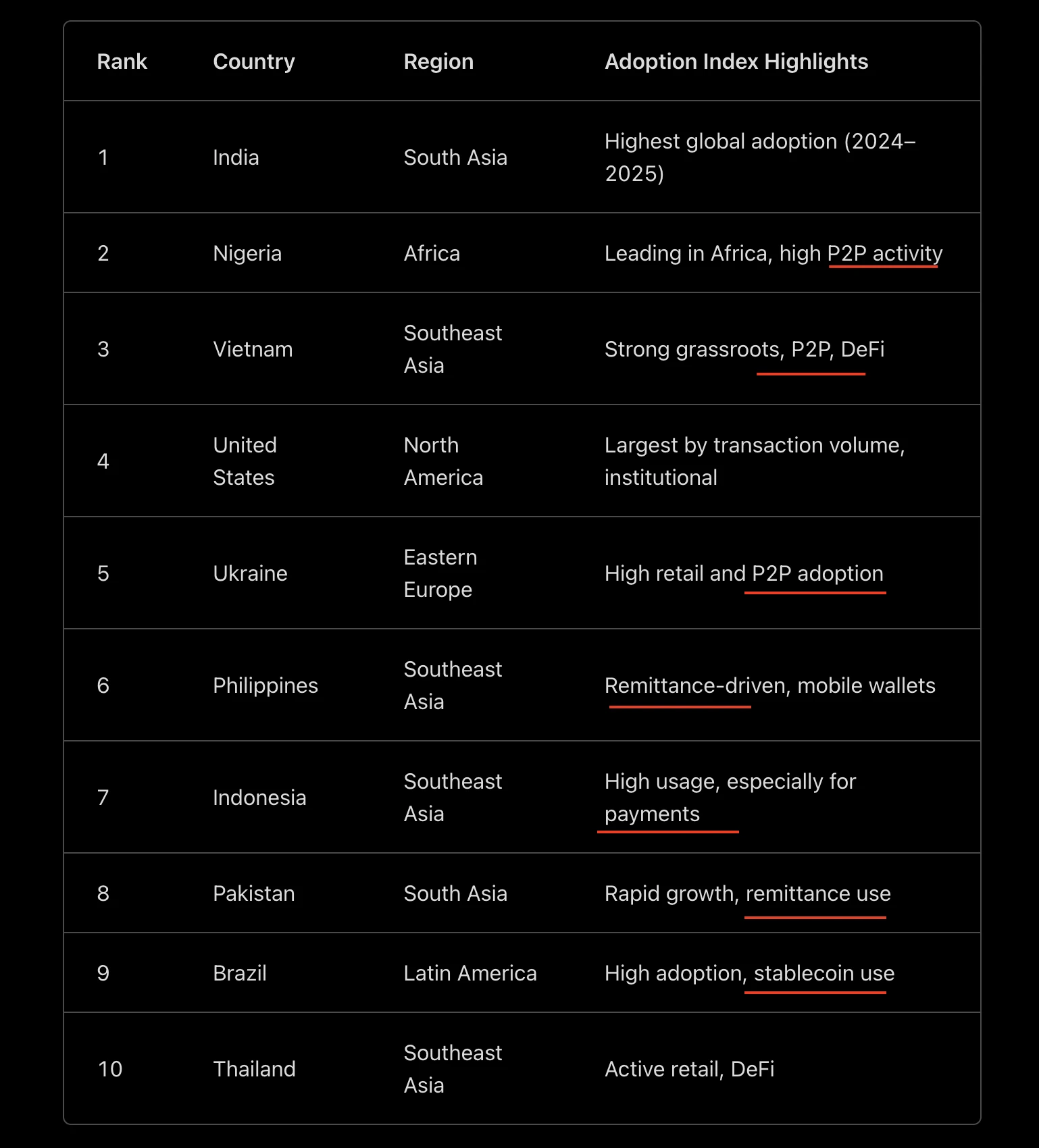
Cross-Border Payments and E-commerce
Another important use case is cross-border payments. Its advantages are clear: instant settlement, lower costs, high transparency, and access to dollars without permission, which release funds for businesses previously hindered by slow and opaque cross-border transfer systems.
Conduit is a great example, a cross-border payment solution supported by Dragonfly. Reports indicate that demand from import and export businesses in Latin America and Africa has surged, driving a 16-fold increase in transaction volume on the Conduit platform, achieving an annual payment volume of $10 billion, reflecting the growing demand for stablecoin solutions in cross-border payments.
At the same time, e-commerce has opened new avenues for stablecoins, primarily because stablecoins can bring profit growth to merchants and payment processors. According to a report by a16z crypto, large retailers like Walmart can reduce network intermediary fees through stablecoin payments, increasing revenue by up to 62%. Payment processors like Stripe can also benefit from profit margins and may be incentivized to integrate stablecoins.
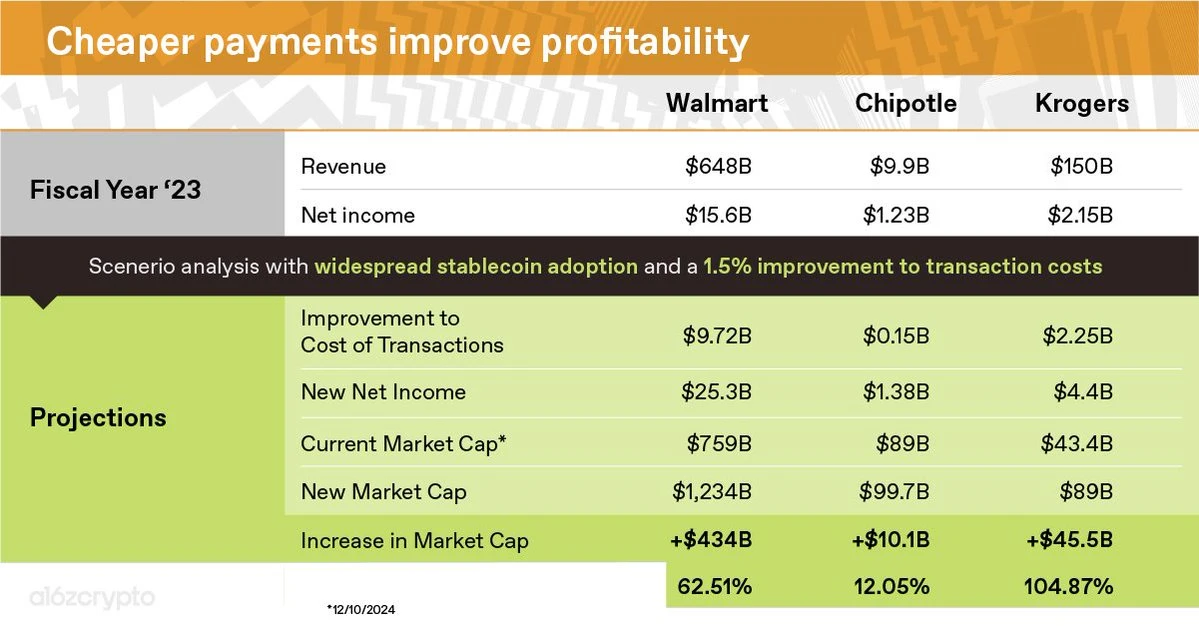
Web2 payment giants are not just watching; they are already taking action, and stablecoins will soon be ubiquitous. Here are some examples:
Shopify accepts USDC payments through Stripe;
Paypal has launched pyUSD with a market cap of $1 billion, usable as a payment channel;
Walmart and Amazon plan to develop their own stablecoins…
With regulatory barriers being removed, stablecoins are poised for explosive growth. We will see increased cross-border stablecoin transfer volumes in emerging markets, more payments in the form of USDC through CEX, Phantom, new banks, and fintech applications on the SOL/Base network, as well as more stablecoin sales in e-commerce. The story is just beginning.
Compliance Tools
Trust is crucial for businesses adopting stablecoins. The Genius Act has now established a regulatory framework for issuing stablecoins in the U.S., and as new issuers enter the market, I expect the demand for compliance tools to grow. To understand the role of compliance tools in the stablecoin stack, let’s explore some basic concepts and background knowledge.
Although regulatory requirements may vary by state, two major regulatory frameworks are shaping the development landscape of stablecoins: MICA and the Genius Act.
The following table summarizes the main differences between these frameworks:
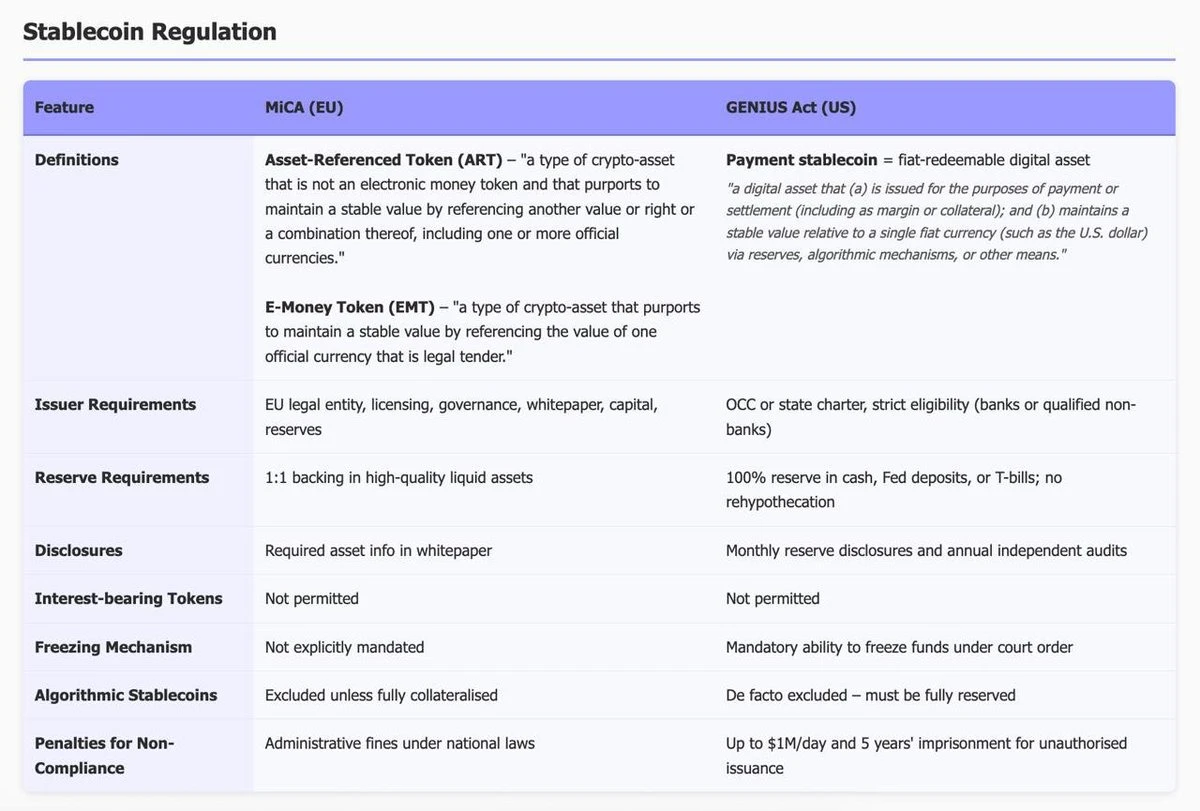
In short, the newly launched Genius Act has two main objectives: consumer protection and national security. Chainalysis has summarized this well, with the basic content as follows:
1. Consumer Protection:
Reserves: Must be fully backed by liquid assets (such as Treasury bonds with a maturity of 93 days or less or cash);
Transparency: Monthly public disclosure of the structure of reserves, redemption policies, and any related fees on the website;
Restrictions: Prohibition of using "USG" and any other "legal" currency in marketing or promotional materials;
Bankruptcy Protection: Stablecoin holders have priority in bankruptcy liquidation;
No Yield: Issuers cannot provide yields or interest for stablecoins that are 1:1 backed.
2. National Security Provisions:
Compliance with the Bank Secrecy Act: AML, KYC, transaction monitoring and record-keeping, reporting any suspicious activities, etc.;
Technical Execution Capability: Ability for issuers to freeze and destroy tokens, with the authority to prohibit non-compliant foreign issuers from entering the U.S. market;
Sanctions Enforcement Coordination: Before blocking transactions from foreign entities, the Treasury Secretary must attempt to communicate and coordinate with the stablecoin issuer as much as possible.
To become a "certified" stablecoin issuer, businesses need a method to identify, freeze, track their reserves, and disclose this information to the public while communicating properly with affected parties. This is where compliance tool providers come into play. For example, Chainalysis Sential can monitor transactions in real-time across 35 categories of risk behaviors, and the API provided by this platform allows issuers to freeze addresses and blacklist them upon detecting suspicious activities, as well as stop, mint, or destroy tokens.
This layer has recently become increasingly important, as some sanctioned entities turn to stablecoins as a medium for transfers when they cannot obtain dollars through traditional banks;
Moreover, due to the price stability provided by the dollar, a portion of the funds from fraud and money laundering is now held in stablecoins. In fact, over the past few years, the proportion of stolen funds held in stablecoins has risen from 20% to nearly 50%. This is precisely why compliance tools are important, as they will help identify, filter, and report suspicious transactions, instilling confidence in the system for businesses and all new users.
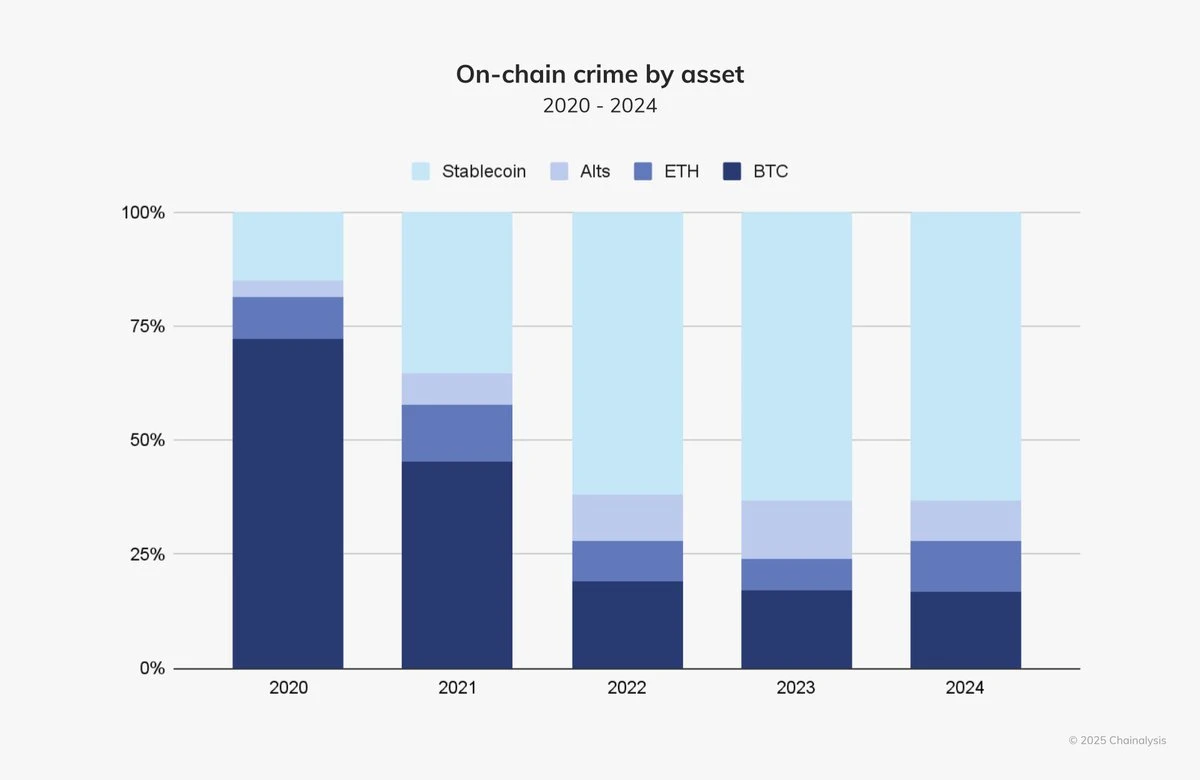
This functionality is not limited to existing infrastructure; over time, all platforms handling stablecoins will need to become more compliance-friendly.
For example, Coinbase recently acquired Liquifi, which is a platform that handles token locking, airdrops, and even payroll disbursements in stablecoins. They have begun offering tax reporting tools and ensuring their tools comply with the regulatory requirements of different countries.
Fireblocks has developed a toolkit similar to chain analysis, but their services include more, such as configurable compliance policies and integrated KYT, AML, and travel rule compliance features. Other players in this field include TRM Labs, Elliptic, and Polyflow, all of which are building compliance layers for stablecoins.
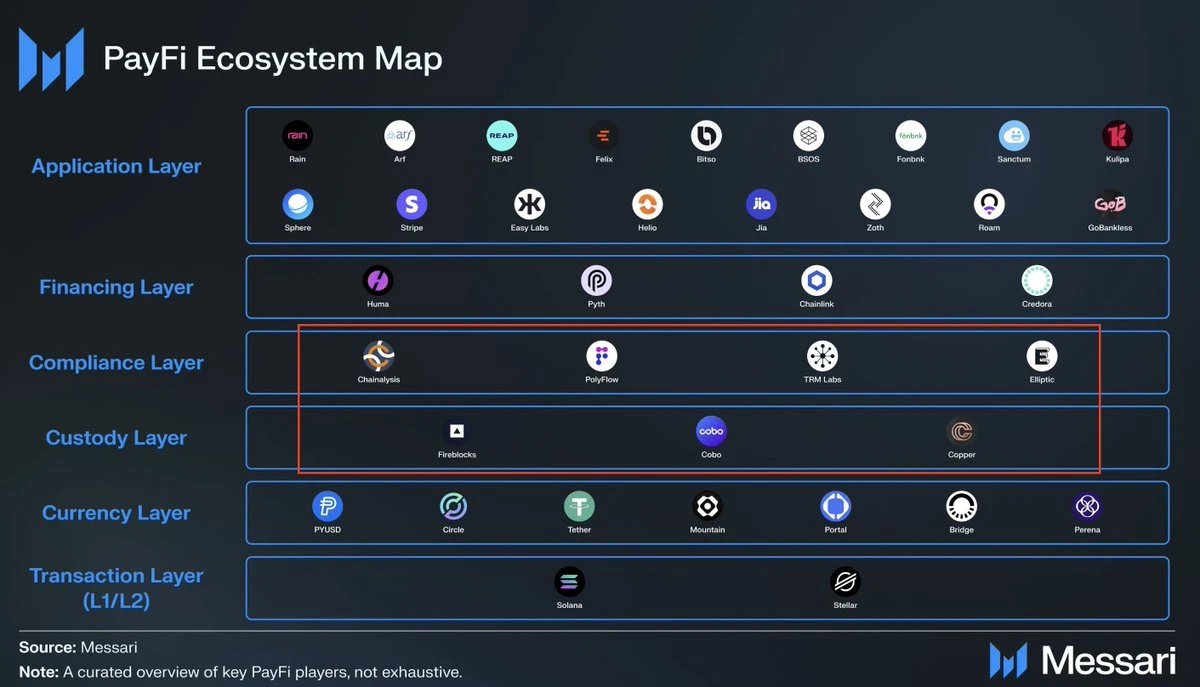
While this may not be the most attractive development direction in the industry, it is a necessary step to gain the trust and adoption of traditional enterprises.
On-chain Foreign Exchange Market
As U.S. regulators approve stablecoins, more and more countries will inevitably adopt stablecoins and asset tokenization. This shift is likely to give rise to an on-chain foreign exchange market, which I believe has two major advantages: round-the-clock availability and increased retail participation due to accessibility. In my view, the on-chain foreign exchange market can be divided into two main layers: issuers and trading venues. We will not delve into the issues of deposits and withdrawals for now, as this requires case-by-case and country-by-country discussions, which will need separate analysis in the future.
Currently, U.S. dollar stablecoins account for 99.79% of the market share, while euro stablecoins hold only 0.2%. Major issuers of non-dollar assets currently include Circle, Paxos, and Tether. However, in the future, banks and institutions that comply with regulatory requirements may also issue their own stablecoins.
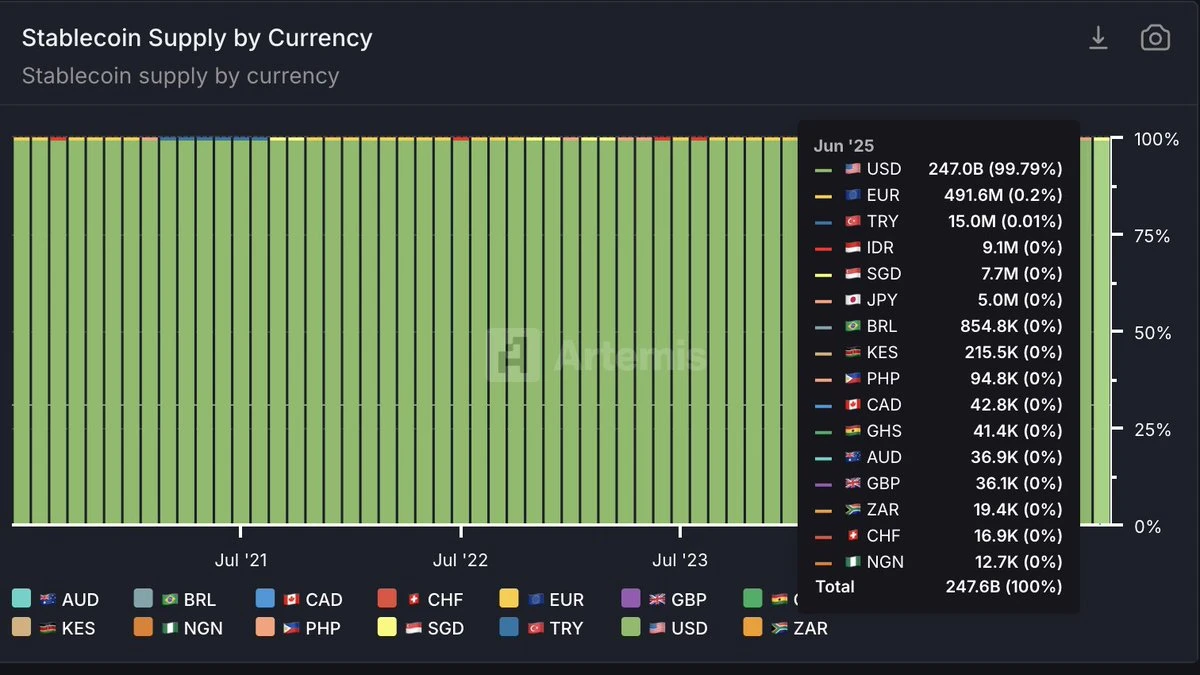
The demand for non-dollar stablecoin trading is gradually increasing. Most dollar/non-dollar trades occur in AMMs, particularly Aerodrome and Pancakeswap. For instance, the USDC to EURC swap on Aerodrome is actually 30 points more favorable than transactions on currency transfer platforms like Wise, even when considering slippage and fees (excluding deposit and withdrawal fees).
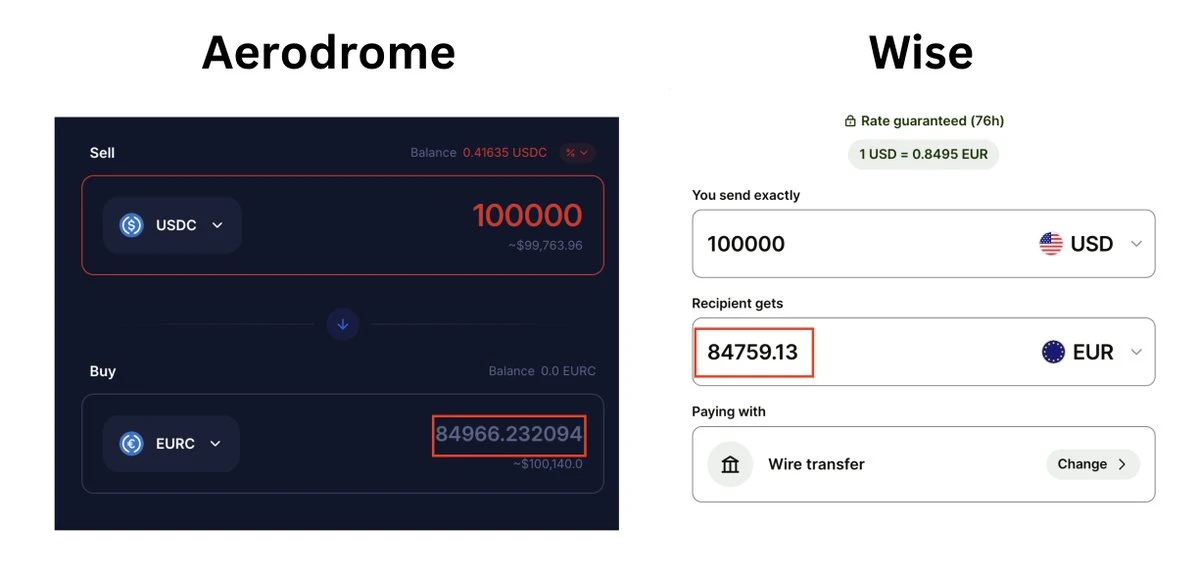
Given the fierce exchange rate competition and increasing economic uncertainty during Trump's administration, we are beginning to see growth in euro stablecoins, with daily active addresses doubling from 600 to 1300 since February. New stablecoins like the Canadian dollar (CAD) and Brazilian currency (BRZ) are also starting to enter the market, although their initial market share is small.
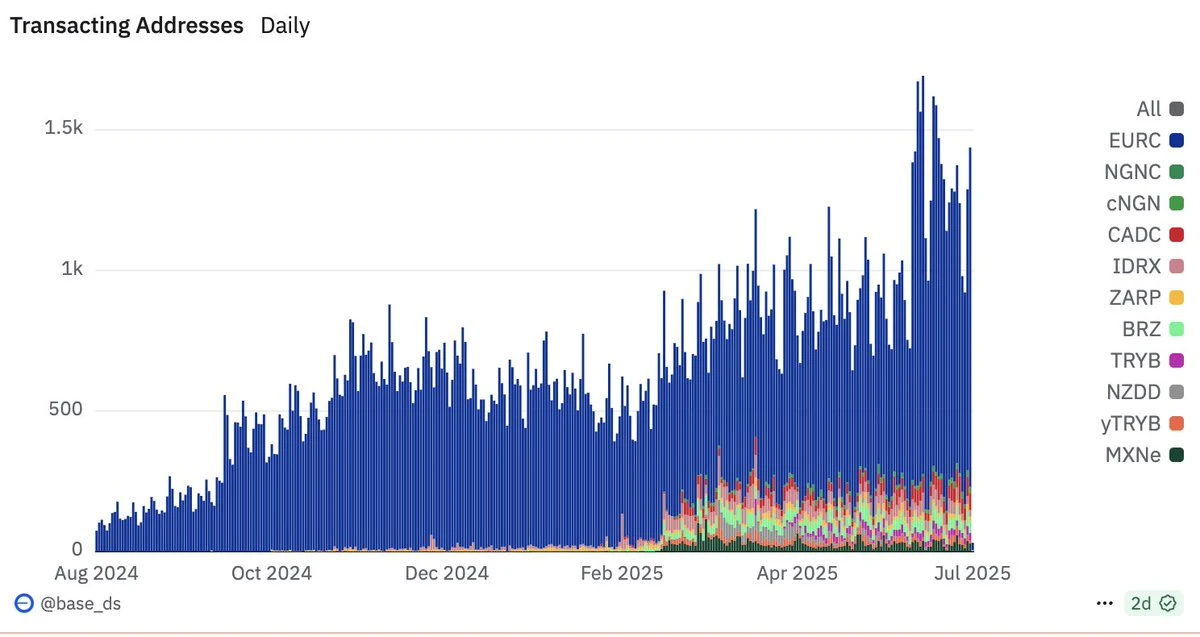
Furthermore, governments and regulatory agencies in the EU, Hong Kong, Singapore, Japan, and the Middle East are actively developing regulatory frameworks to facilitate asset tokenization, including stablecoins backed by local fiat currencies. This again indicates that the widespread acceptance of stablecoins provides an excellent opportunity for the emergence of an on-chain foreign exchange market.
DeFi Foreign Exchange Market:
Although issuers like Tether, Circle, and Paxos, as well as banks and fintech companies, are driving the adoption of stablecoins, some on-chain projects are attempting to innovate in the foreign exchange space by adding "DeFi" elements.
For example, Injective** offers a round-the-clock market that allows trading of euro and pound pairs with leverage of up to 100 times, while Mento Labs utilizes CDPs to achieve multi-currency exposure while directly holding the underlying assets. This is an exciting area that can provide users with more mining/trading opportunities.**
However, there are two major obstacles currently facing the on-chain foreign exchange space.
Insufficient on-chain liquidity, with the largest single pool containing only $1.3 million in EURC, which is unhealthy for large-scale trading.
The friction of deposits and withdrawals between fiat (within banks) and stablecoins remains a major barrier to competing with the efficiency of traditional foreign exchange systems.
High Yields, More Yields
We all love DeFi, or what we call personal finance. In the near future, anyone who comes into contact with USDC will ultimately think about how to generate returns from idle funds.
While regulation largely favors payment-type stablecoins, the growth of yield markets driven by stablecoins cannot be overlooked. In the past year, yield-focused stablecoin projects like Ethena and Sky have seen their market capitalization grow sixfold to about $6 billion, while the demand for leverage or mining has become a major catalyst for new highs in TVL in lending protocols like Aave, Euler, and Syrup.
However, the current situation we face is vastly different from the past. During the previous DeFi summer, we enjoyed high yields brought by the token economic flywheel, but this sustainability often depended on the token price itself. When token prices fell, protocols would either stop operating or become exceptionally difficult to maintain.
Since the success of Ethena, the Ce-DeFi model has become increasingly popular, where depositors lend their stablecoins to teams executing off-chain strategies in exchange for real trading returns. This has sparked a wave of yield-focused stablecoins, with many projects beginning to accept deposits to execute on-chain/off-chain strategies. This trend means that token prices are no longer the sole consideration for using the protocol, but it often also reduces the value of the tokens.
The most common yield generation strategies in the market mainly include three: Treasury bonds, delta-neutral strategies, and money market strategies. Although there are more strategies available in the market, these are considered "proven" yield strategies, and these yield-focused stablecoin strategies can generate approximately $1.5 million in returns daily, with a positive trend.
RWA/Money Market Strategies
Yield-focused stablecoins are just the tip of the iceberg; the next stage should be a new asset class that combines traditional financial RWA strategies with DeFi elements (such as compounding), which will attract more institutional and fund participation.
A recent example: ACRED (Apollo Diversified Credit Bond Fund) investors can deposit ACRED into the Morpho Blue market and collateralize to borrow USDC. Then, borrowers can reinvest the borrowed USDC back into ACRED, creating a leveraged cycle where ACRED investors enjoy leveraged returns while USDC providers (retail/funds) earn interest paid by ACRED.
Here is a chart demonstration by Gauntlet and Redstone.
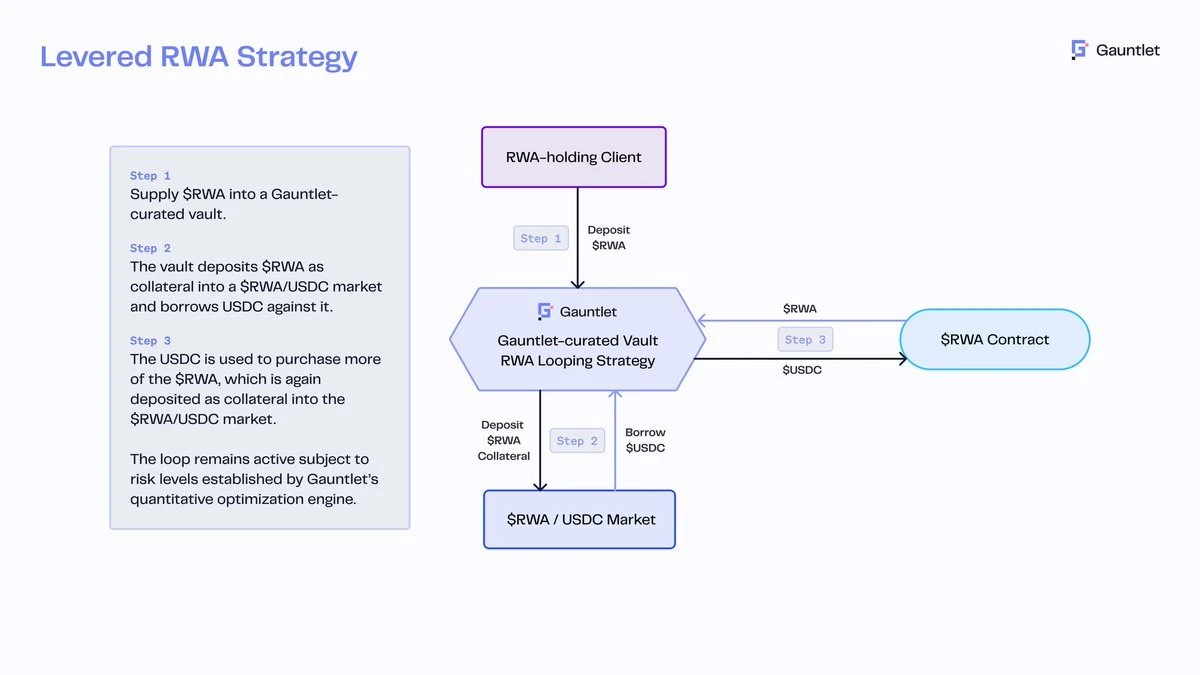
This is just one example; traditional financial participants and funds will eventually realize that they can leverage the vast liquidity of stablecoins in DeFi to bring their complex yield strategies and tokenized products on-chain and use them as collateral to borrow stablecoins. As long as the underlying assets (such as USCC providing a 7.7% yield) can offer sustainable and attractive returns to qualified investors, the market can expand indefinitely. This is a new source of yield generated by leveraged RWA assets.
However, directly providing liquidity for different strategies may confuse newcomers. In my view, the ideal projects to establish these strategies in the form of treasuries are:
Upshift, Morpho, Euler Labs, Veda, Maple, Nest
These platforms are striving to be compliant while also meeting institutional demands. However, there are currently no clear legal guidelines regarding these products, and legal and compliance risks remain one of the main obstacles faced.
Market Fragmentation
As project strategies and progress update (with over 50 projects and growing daily), the market is becoming increasingly complex and fragmented. New users do not know where to deploy their stablecoins for the best yields, nor do they know how to allocate their portfolios based on risk-adjusted metrics. More importantly, many excellent strategies lack exposure. In this case, an aggregation platform or a unified "yield" page (preferably with a risk dashboard) can connect farmers and strategies. We need an on-chain product similar to Binance Earn, with higher transparency and more detailed risk disclosures.
Stablecoin projects like cap and Perena as well as Gauntlet have been dedicated to building aggregation platforms that simplify the complexity of finding, managing, and deploying yield strategies. They have created a comprehensive infrastructure where users can achieve optimal yields (whether on-chain or off-chain) with just a "click," while only paying a small management fee.
cap:
cap aggregates all top on-chain/off-chain yield strategies and unifies their exposure into a single stablecoin/anchor asset, which can also interact with any DeFi product. The allocation of capital depends on strategy performance, forming a self-reinforcing market with the most sustainably competitive yields.
But this is just part of their product. For stablecoins to achieve widespread adoption, trust is still required. cap has created a new market where re-stakers can delegate their assets to strategy providers on Eigenlayer to provide the "trust" needed by stablecoin holders. In return, these re-stakers receive a proportion of the yield as compensation for providing trust.

A very interesting idea is to "safely" aggregate yields.
Perena:
With its advantages of transaction speed and low gas fees, SOL is the perfect chain for everyday stable payments and on-chain foreign exchange markets. Perena's vision for a stablecoin bank is to build a unified stablecoin liquidity layer that integrates the on-chain liquidity of USDC, USDT, PYUSD, BENJI, AUSD, and other stablecoins into a single AMM represented by USD*. This design can create a deeper stablecoin liquidity pool, providing the best stable exchange rates for swap traders on SOL.
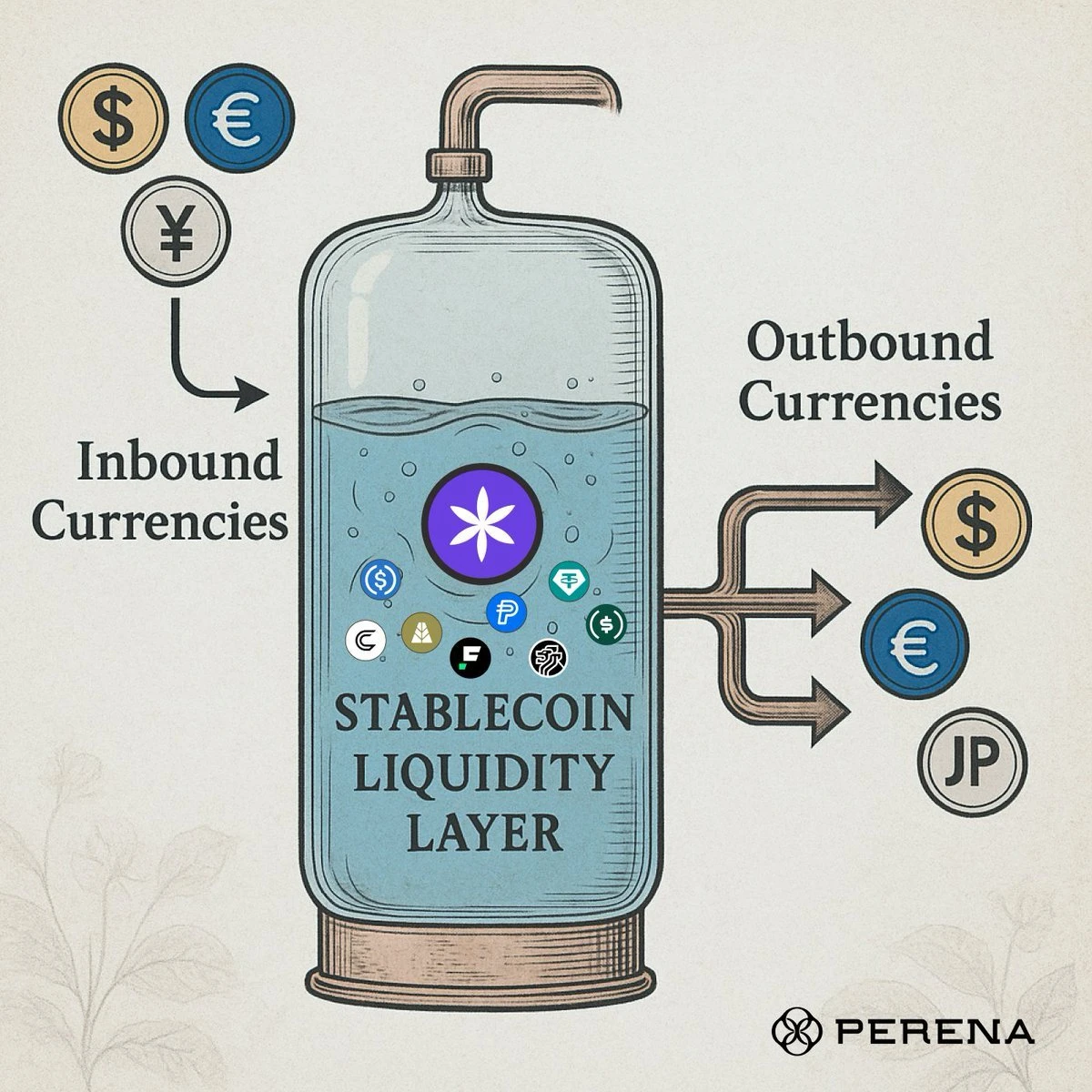
Perena v2 will add smart routing features to scan all pools and OTC venues, ensuring the best on-site swap rates (even beyond SOL). This tool will also support multiple currencies (such as EURC, GBP, etc.) and cross-chain swap functions, preparing for the large-scale adoption of stablecoins.
The unification does not stop there—USD* is not just an exchange engine. It is a platform that integrates savings and yields. Perena—i.e., the stablecoin bank network—collaborates with over 20 projects to find the best yields and strategies for USD* holders, connecting strategies that need exposure with stablecoin investors seeking yields, all done on a single interface.
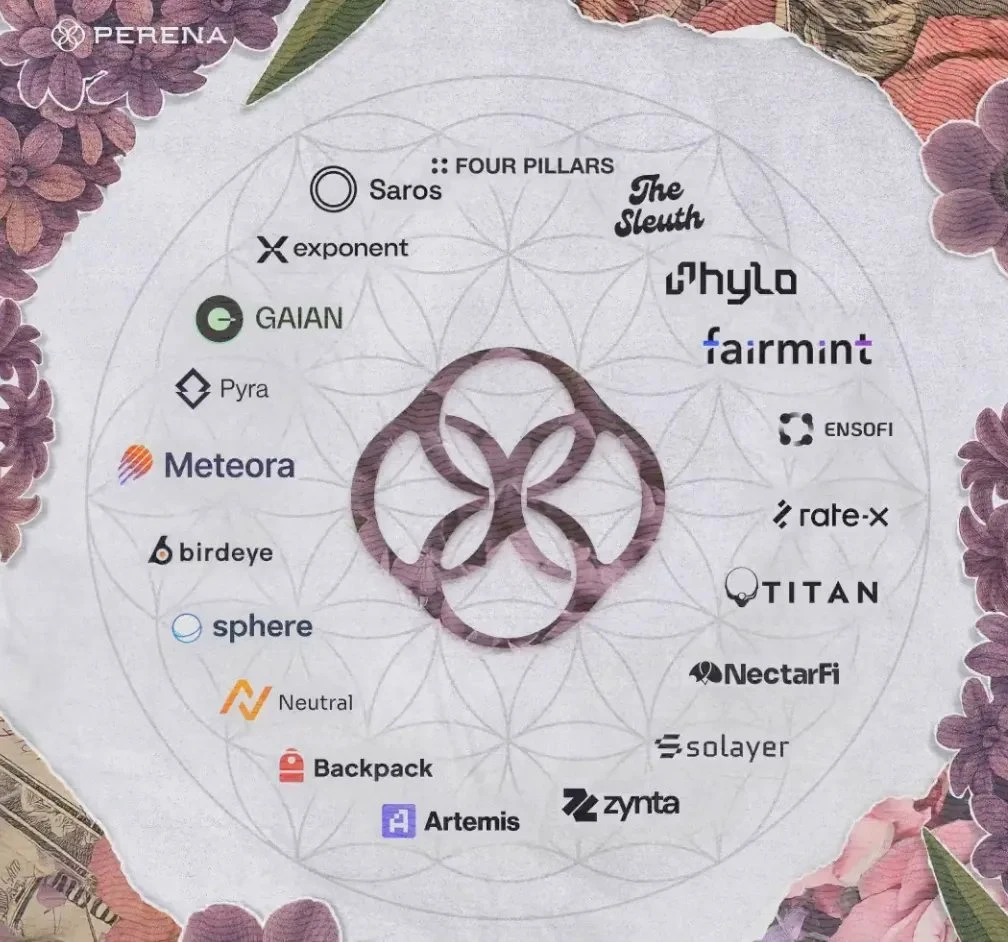
Gauntlet USD Alpha:
Gauntlet has launched their new product, Gauntlet USD Alpha (gtUSDa), which is a treasury capable of dynamically deploying stablecoins to different lending markets for optimal risk-adjusted returns.
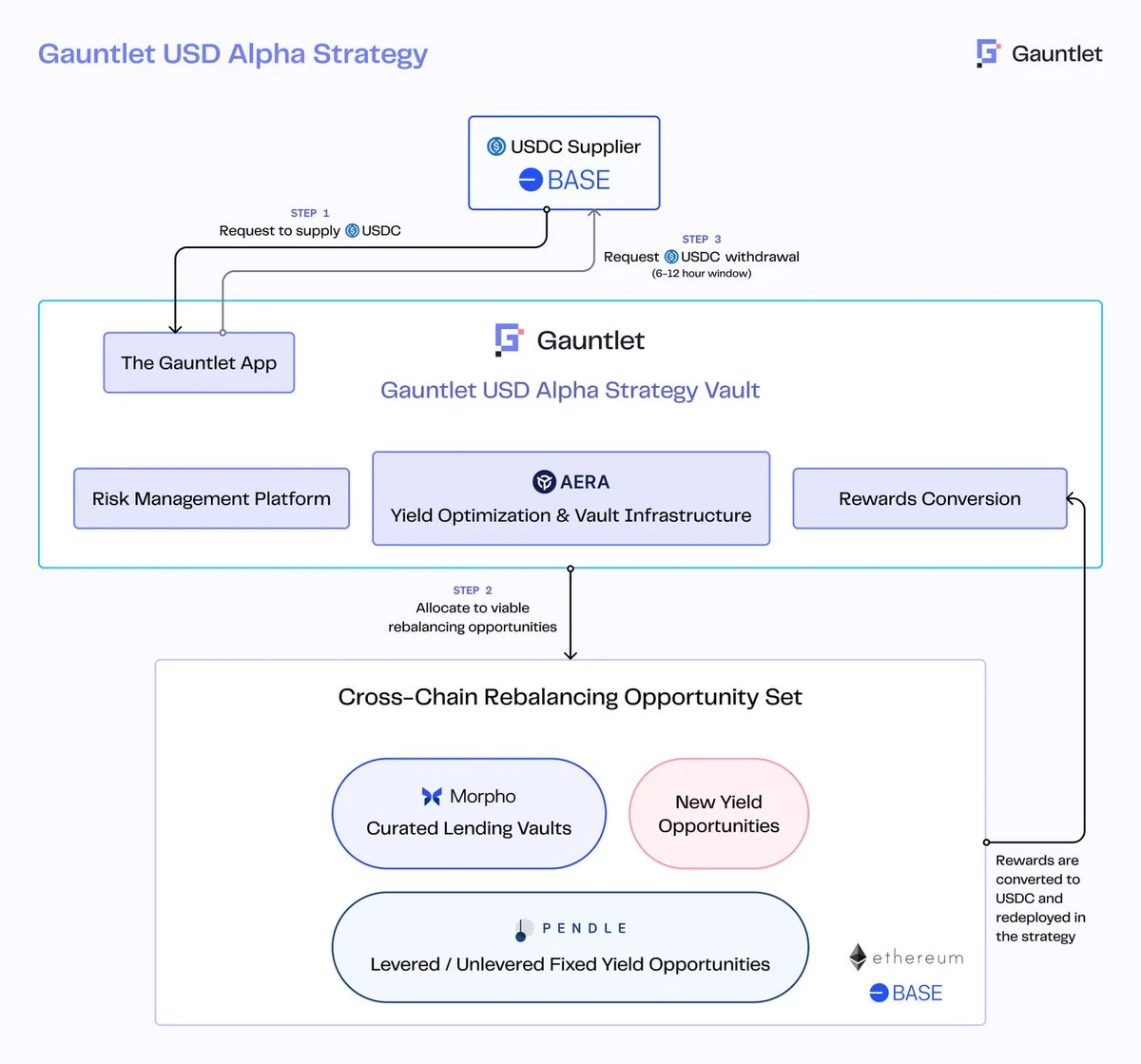
This strategy is managed by the Gauntlet team through Aera Finance, a treasury infrastructure they developed for implementing off-chain strategies on-chain. The strategy is executed and supervised by a "Guardian," a designed role that helps clients achieve their on-chain goals. The goal of the Gauntlet USD Alpha treasury is to allocate depositors' stablecoins to the current lending markets with the highest actual yields while automatically adjusting positions according to its risk guidelines.
During backtesting, Gauntlet's risk-adjusted strategy on Morpho (Base + Ethereum) outperformed the benchmark yield of Vaults.fyi (7.76% alpha yield compared to a 4.46% benchmark yield). The treasury is now live, with a yield of 7.2%, most of which is allocated to midasUSD and gtusdcf.
Gauntlet stable alpha provides a platform for passive "Farmers" seeking risk-adjusted returns, simplifying the complexity of discovering actual yields and managing risks.

Conclusion
The future of stablecoins is bright.
On one hand, regulatory progress is accelerating the mainstream application of stablecoins. The "Genius Act" provides confidence for traditional finance, fintech, or payment channels by establishing a clear compliance framework, enabling integration with stablecoins.
At the same time, emerging countries will continue to adopt stablecoins for cross-border transactions and dollar exposure, while countries that tokenize their local fiat currencies will create a round-the-clock foreign exchange market compatible with DeFi.
More ambitious companies can now leverage the vast on-chain stablecoin liquidity to execute RWA strategies on-chain, allowing retail investors to earn yields by providing liquidity. The large-scale adoption of stablecoins will also stimulate demand for on-chain personal finance, driving the growing demand for yield products. Projects like Cap, Perena, and Gauntlet will also address fragmentation issues.
Today, stablecoins are no longer "just another internet currency," but a true asset that proves the significance of blockchain in the real world. They offer round-the-clock, instant settlement.
Everything about stablecoins is starting to accelerate.
免责声明:本文章仅代表作者个人观点,不代表本平台的立场和观点。本文章仅供信息分享,不构成对任何人的任何投资建议。用户与作者之间的任何争议,与本平台无关。如网页中刊载的文章或图片涉及侵权,请提供相关的权利证明和身份证明发送邮件到support@aicoin.com,本平台相关工作人员将会进行核查。




